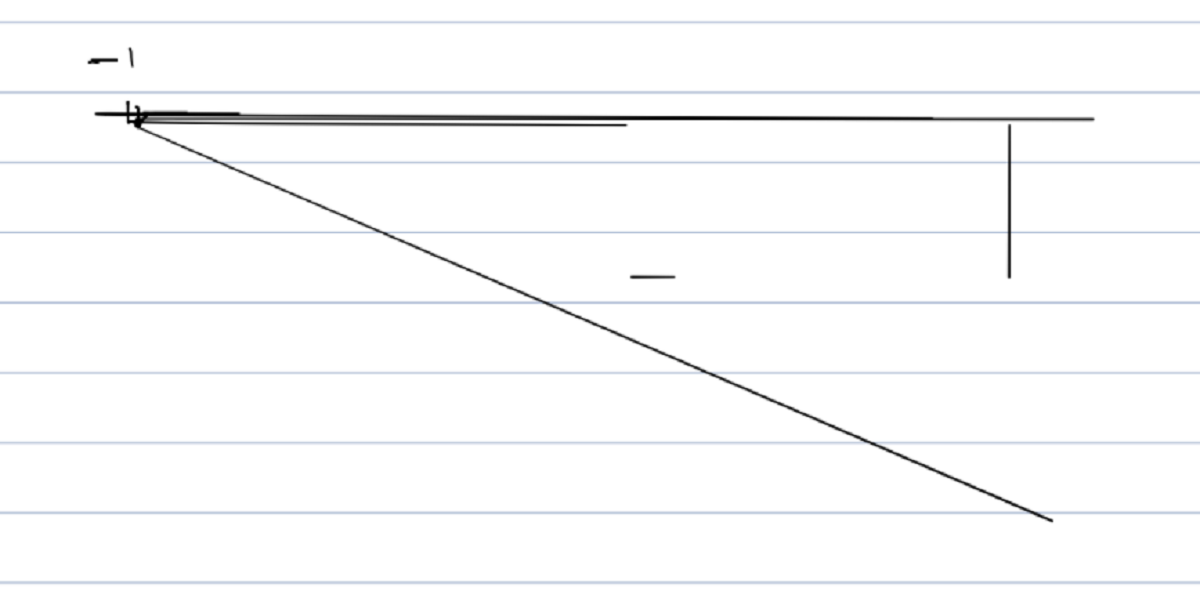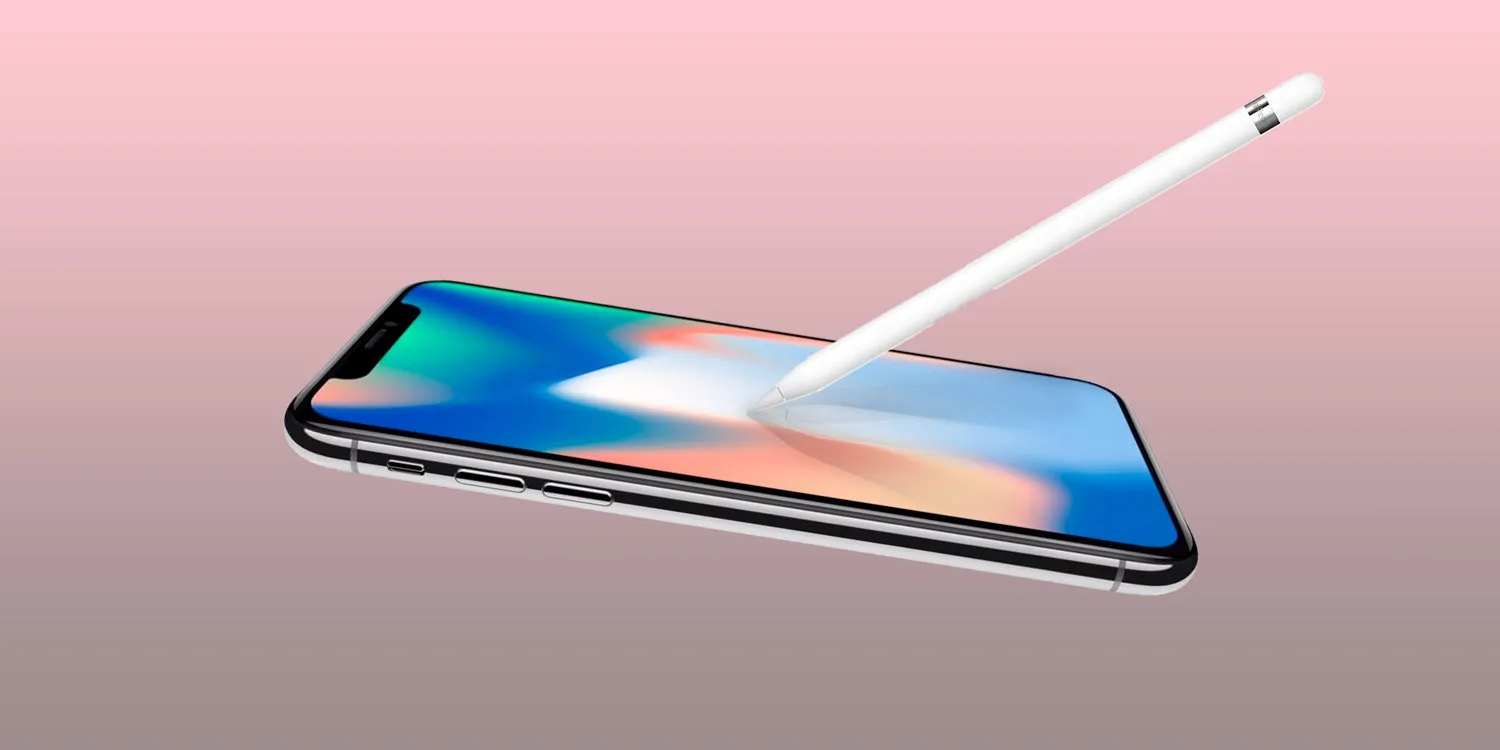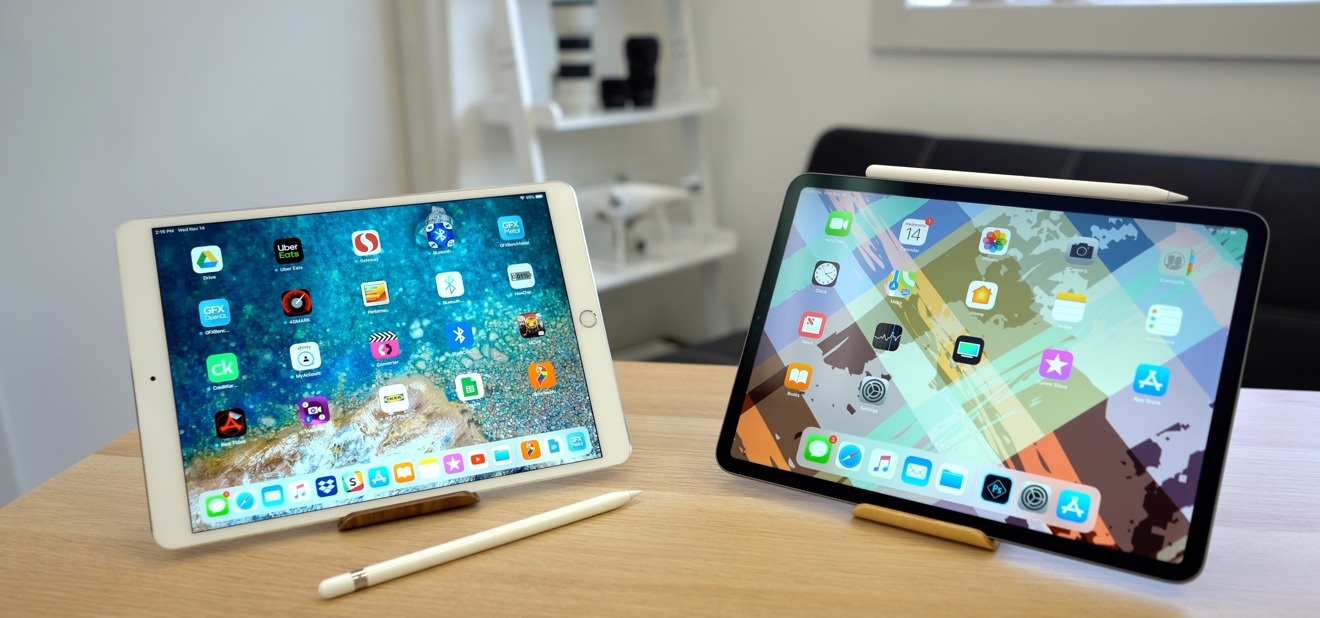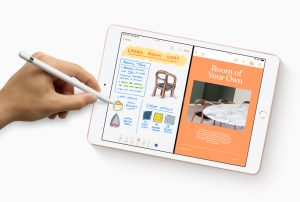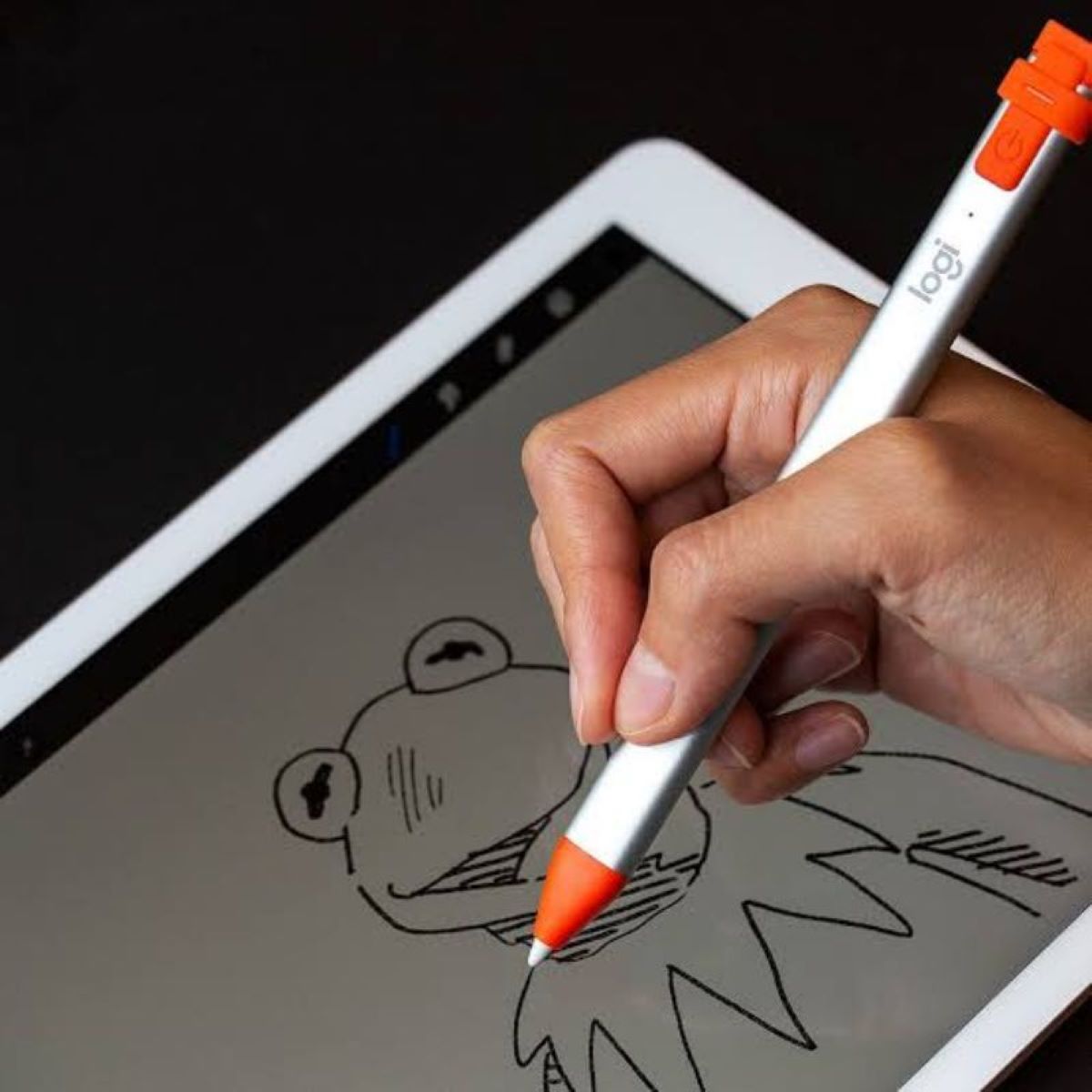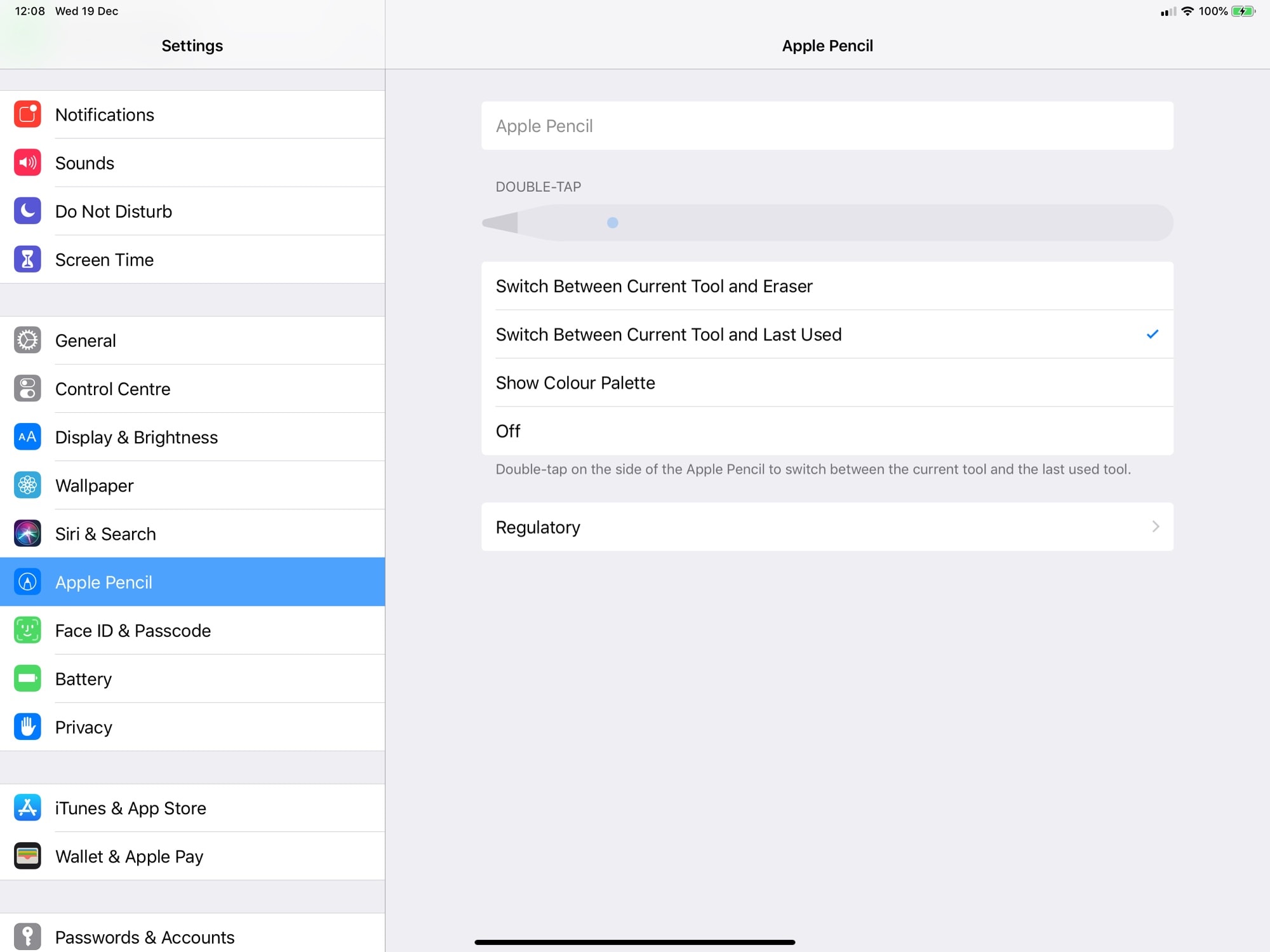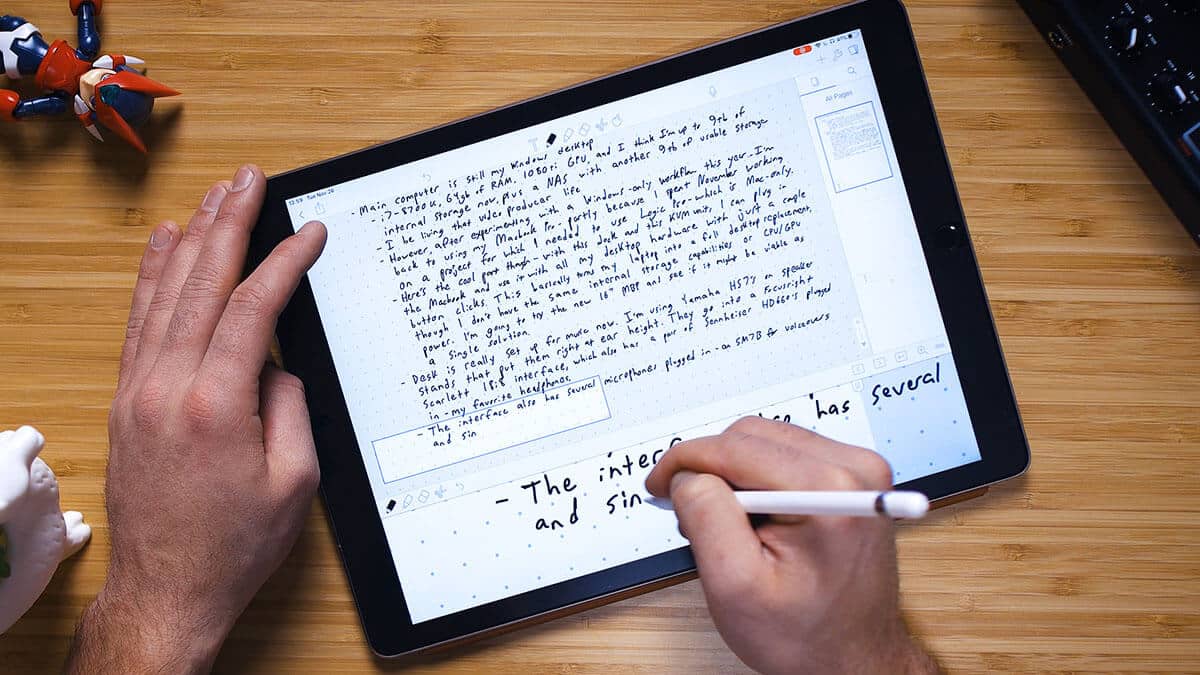Possible Reasons for Apple Pencil Making Lines
Apple Pencil is a versatile tool that allows users to draw, write, and interact with their devices like never before. However, there may be instances where you notice lines appearing when using your Apple Pencil. This can be frustrating and hinder your creative process. In this section, we will explore some possible reasons for why your Apple Pencil is making lines and provide suggestions on how to address them.
1. Dirty or Damaged Tip: One of the most common reasons for lines appearing is a dirty or damaged tip on the Apple Pencil. Over time, debris can accumulate on the tip, leading to imperfect contact with the screen. To resolve this issue, try cleaning the tip with a soft, lint-free cloth or replace it with a new one if it is damaged.
2. Improper Calibration: Another factor that can cause lines is an improper calibration between the Apple Pencil and your device. Calibrating the Apple Pencil ensures precise drawing and writing. To calibrate the Apple Pencil, go to the Settings app on your device, select “Apple Pencil,” and follow the on-screen instructions.
3. Software Glitch: Occasionally, a software glitch can interfere with the Apple Pencil’s functionality, resulting in lines appearing on the screen. Restarting your device or updating to the latest software version can help resolve this issue.
4. Low Battery: If your Apple Pencil has a low battery, it may not perform optimally, leading to lines or other irregularities in your drawings. Ensure that your Apple Pencil is fully charged or try using a different charging cable or adapter.
5. Incompatible App or Device: Some apps or devices may not be fully compatible with the Apple Pencil, which can result in lines or other glitches. Check if there are any software updates available for the app or device and consider reaching out to the app’s developer for further assistance.
6. Connectivity Issues: Poor connectivity between your device and the Apple Pencil can cause lines to appear. Ensure that the Apple Pencil is securely connected to your device, and if using a Bluetooth connection, check that it is enabled and functioning correctly.
7. Pressure Sensitivity Settings: Adjusting pressure sensitivity settings in compatible apps can help alleviate line-related issues. Experiment with different pressure levels to find the most suitable setting for your needs.
8. Device Compatibility: Not all Apple Pencil models are compatible with every Apple device. Ensure that your device is listed as compatible with your Apple Pencil model to ensure optimal performance.
9. Hardware Malfunction: If none of the above solutions work, there may be a hardware malfunction causing the lines on your Apple Pencil. In such cases, it is recommended to contact Apple Support or visit an authorized service center for further assistance.
10. Apple Pencil Model Differences: Depending on the version and model of your Apple Pencil, there may be slight differences in performance and compatibility. Consult Apple’s official documentation or contact their support team to ensure that the lines you are experiencing are not a result of these model-specific variations.
By considering these possible reasons for lines appearing with your Apple Pencil and following the suggested solutions, you should be able to address the issue and enjoy a seamless drawing and writing experience once again.
Dirty or Damaged Tip
One of the most common reasons for lines appearing with your Apple Pencil is a dirty or damaged tip. Over time, debris and grime can accumulate on the tip, causing imperfect contact with the screen and resulting in erratic lines or skips in your drawings. Additionally, if the tip of your Apple Pencil is damaged, it may also lead to poor performance.
To address this issue, the first step is to clean the tip of your Apple Pencil. Start by gently removing the tip from the pencil’s body. Use a soft, lint-free cloth or a cotton swab lightly dampened with water to wipe away any dirt or residue from the tip. Be careful not to apply excessive pressure, as this could damage the tip further.
If cleaning the tip doesn’t resolve the issue, it may be necessary to replace it. Apple provides replacement tips that are easy to install. Simply unscrew the old tip counterclockwise and screw the new one into place. Make sure to choose the correct replacement tip for your particular Apple Pencil model.
Regularly cleaning and maintaining the tip of your Apple Pencil is essential to maintain optimal performance. Consider establishing a routine to clean it every few weeks, especially if you notice any buildup of dirt or if your drawings are consistently showing signs of line irregularities.
Furthermore, it’s essential to handle your Apple Pencil with care to avoid damaging the tip. Avoid dropping or applying excessive force to the pencil to prevent any physical damage to the tip that may affect its performance. Using a protective case or carrying pouch can help safeguard the Apple Pencil when not in use.
In summary, if you are experiencing lines with your Apple Pencil, it’s worth checking the tip for dirt or damage. Cleaning the tip and, if necessary, replacing it can often resolve the issue and restore optimal performance. Regular maintenance and gentle handling of your Apple Pencil can also help prevent future line-related problems.
Improper Calibration
Another possible reason for lines appearing with your Apple Pencil is improper calibration between the pencil and your device. During the calibration process, the device establishes a precise connection with the Apple Pencil, ensuring accurate tracking of your drawing or writing movements. If the calibration is off, it can result in lines that are not aligned correctly or have inconsistent thickness.
To calibrate your Apple Pencil, follow these steps:
- Make sure your Apple Pencil is fully charged. A low battery can affect the calibration process.
- Go to the Settings app on your device and find the “Apple Pencil” settings.
- Select “Calibrate” or “Pair” and follow the on-screen instructions to complete the calibration process.
During the calibration process, make sure to follow the instructions carefully and use an undisturbed workspace. It’s also advisable to keep your device and Apple Pencil in close proximity during calibration to ensure a strong connection.
If you have already calibrated your Apple Pencil but are still experiencing line-related issues, you may want to try recalibrating it. Sometimes, a simple recalibration can fix any inconsistencies or inaccuracies in the initial calibration.
It’s important to note that not all Apple devices support Apple Pencil calibration. Ensure that your device is listed as compatible with the Apple Pencil calibration feature. If your device does not support calibration, try updating your software to the latest version, as Apple often introduces new features and improvements that may address these issues.
In cases where recalibration doesn’t resolve the problem, it could indicate a hardware issue with either the Apple Pencil or your device. Contacting Apple Support or visiting an authorized service center is recommended for further assistance and troubleshooting.
In summary, if you are experiencing line-related problems with your Apple Pencil, improper calibration could be the culprit. Follow the calibration process outlined in the device’s settings, ensuring a fully charged Apple Pencil and a suitable working environment. If issues persist, consider recalibrating or seeking support from Apple to diagnose and address any potential hardware-related problems.
Software Glitch
Lines appearing with your Apple Pencil could be due to a software glitch. Software glitches can occur for various reasons, such as outdated software versions, conflicting app settings, or temporary system issues.
If you notice lines or irregularities when using your Apple Pencil, a simple solution is to restart your device. Restarting can refresh the system, clear temporary files, and resolve minor software glitches. Press and hold the power button on your device until the “Power Off” slider appears, then slide to power off. Wait a few seconds, then press and hold the power button again until the Apple logo appears to turn your device back on.
It’s also worth checking if there are any available software updates for your device and the apps you are using with the Apple Pencil. Software updates often include bug fixes, performance enhancements, and compatibility improvements, which can help resolve line-related issues. Go to your device’s Settings app, select “General,” and then tap on “Software Update” to check for any available updates.
In some cases, resetting the settings on your device can help resolve software-related problems. This action will restore default settings, so make sure to back up your important data before proceeding. Go to the Settings app, select “General” > “Reset” > “Reset All Settings,” and confirm your choice. Note that this will not erase your data, but it will reset settings like Wi-Fi passwords, display brightness, and privacy preferences.
If you are experiencing line-related issues with a specific app, it’s worth exploring the app’s settings to ensure there are no conflicting options. Look for any brush or stroke settings that might be affecting the appearance of your lines. Experimenting with different settings or restoring the default settings within the app can help eliminate any software-related glitches that may be causing the problem.
In rare cases, persistent software glitches may require a complete restore of your device’s operating system. Before proceeding with a restore, make sure you have a recent backup of your device. Connect your device to a computer with iTunes or Finder, select your device, and choose the “Restore” option. Follow the on-screen instructions to initiate the restore process.
If the software glitch persists even after attempting the above solutions, it is advisable to contact Apple Support or visit an authorized service center for further assistance. They can diagnose the problem and provide you with more specialized guidance.
In summary, software glitches can cause lines to appear when using the Apple Pencil. By restarting your device, checking for software updates, resetting settings, and troubleshooting specific app settings, you can often resolve these glitches. However, if the problem persists, reaching out to Apple Support or visiting a service center is recommended.
Low Battery
One of the common reasons for lines appearing with your Apple Pencil is a low battery. When the battery level of your Apple Pencil is running low, it may not be able to perform optimally and can result in line irregularities or other issues.
To address this problem, start by checking the battery level of your Apple Pencil. You can do this by using the Battery widget on your device or by going to the Settings app and tapping on “Bluetooth” and then selecting your Apple Pencil. Ensure that the battery level is sufficient or at least above the minimum recommended level for proper functioning.
If the battery is indeed low, charge your Apple Pencil using either the included Lightning cable or by attaching it to the magnetic charging connector on your iPad Pro (2nd generation), iPad Air (4th generation), or iPad mini (5th generation). It’s important to use a reliable power source, such as an Apple power adapter or a USB port on a computer, for optimal charging performance.
If you have been using the Apple Pencil continuously for an extended period, it is possible that the battery may drain faster than usual. In such cases, it’s worth taking short breaks and allowing the Apple Pencil to recharge briefly before resuming use.
In some instances, a faulty charging cable or adapter may prevent the Apple Pencil from charging properly, resulting in a depleted battery and the appearance of lines. Try using a different charging cable or adapter to see if that resolves the issue.
Another option is to enable the “Low Power Mode” on your device. Enabling this mode can help conserve battery life and increase the performance of your Apple Pencil. To activate “Low Power Mode,” go to the Settings app, select “Battery,” and toggle on the “Low Power Mode” option.
If you have tried charging your Apple Pencil and ensuring sufficient battery level but the lines persist, it could indicate a larger issue. Consider reaching out to Apple Support or visiting an authorized service center for further assistance and diagnostics.
In summary, a low battery can affect the performance of your Apple Pencil and lead to lines appearing in your drawings. Make sure to regularly check the battery level, charge your Apple Pencil when necessary, and consider using “Low Power Mode” to optimize battery performance. If the issue persists, contacting Apple Support or visiting a service center is recommended.
Incompatible App or Device
If you are experiencing lines while using your Apple Pencil, it could be due to using an incompatible app or device. Not all apps or devices are designed to fully support the features and functionalities of the Apple Pencil, which can result in line irregularities or other issues.
The first step to troubleshoot this problem is to check if there are any available updates for the app or device you are using. Developers often release updates to improve compatibility and resolve known issues. Go to the App Store or your device’s settings to check for updates and install them if available. It’s also advisable to read the app’s description or contact the developer to verify if the app is compatible with the Apple Pencil.
If you are using a drawing or note-taking app, ensure that it explicitly supports the Apple Pencil and its various features, such as pressure sensitivity and tilt functionality. Apps that are optimized for the Apple Pencil will provide a smoother and more accurate drawing experience. Consider trying different apps that are known to be compatible with the Apple Pencil to see if the issue resolves.
It’s worth mentioning that some older devices may have limitations when it comes to Apple Pencil compatibility. Ensure that your device is listed as compatible with the Apple Pencil model you are using. The newer iPad models are generally more compatible with the Apple Pencil, offering enhanced performance and features.
In some cases, using an outdated or unsupported iOS version on your device can lead to issues with the Apple Pencil. Check for software updates and ensure that your device is running the latest iOS version. Updating the software can often improve compatibility and address any known issues.
If you have verified app compatibility and updated your device but still experience lines, it may be worth reaching out to the app developer for further assistance. They may have specific troubleshooting steps or recommendations to resolve any compatibility-related problems.
If you have access to another compatible device, try using your Apple Pencil with that device to see if the issue persists. This can help determine if the problem lies with the app or the device itself. If the Apple Pencil functions properly on the other device, it may indicate a compatibility issue with the original device.
In summary, lines appearing with your Apple Pencil could be a result of using an incompatible app or device. Ensure that the app is explicitly designed to support the Apple Pencil’s features and functionalities. Check for updates, verify compatibility, and consider contacting the app developer for further assistance. If possible, test the Apple Pencil on another compatible device to help identify the source of the issue.
Connectivity Issues
If you are experiencing lines with your Apple Pencil, it’s possible that you are facing connectivity issues between the pencil and your device. Poor connectivity can result in delayed responses, inaccurate tracking, or the appearance of lines.
The first step in troubleshooting connectivity issues is to ensure that your Apple Pencil is securely connected to your device. If you are using a first-generation Apple Pencil, make sure it is properly inserted into the lightning port of your device. For second-generation Apple Pencil, attach it magnetically to the side of your iPad Pro.
If the Apple Pencil is connected to your device, but you are still experiencing connectivity issues, it’s worth checking if Bluetooth is enabled on your device. Go to the Settings app, select “Bluetooth,” and ensure that it is toggled on. In some cases, temporarily turning off and then back on Bluetooth can help establish a more stable connection.
If you are using a device that supports both Wi-Fi and cellular connectivity, switching between these modes can sometimes disrupt the connection of your Apple Pencil. Try toggling airplane mode on and off on your device to reset the wireless connections.
It’s also advisable to keep your device close to the Apple Pencil during use. Maintaining a close proximity can help ensure a stronger Bluetooth connection and reduce the likelihood of connectivity issues.
In instances where the Apple Pencil is still not connecting or is experiencing frequent disconnections, restarting your device can help refresh the system and clear any temporary issues. Press and hold the power button until the “Power Off” slider appears, slide it to power off, and then turn your device back on after a few seconds.
If the problem persists, it’s worth testing the Apple Pencil on another device to determine if the connectivity issue is specific to your original device. If the Apple Pencil connects without any issues on the other device, it may indicate a problem with the original device’s Bluetooth hardware or software. Consider reaching out to Apple Support or visiting an authorized service center for further assistance.
Lastly, checking for any available software updates for your device is crucial, as updates often include improvements to connectivity and Bluetooth functionality. Go to the Settings app, select “General,” and then tap on “Software Update” to check for any available updates.
In summary, connectivity issues can be a common cause of lines with your Apple Pencil. Ensure that the Apple Pencil is securely connected to your device, enable Bluetooth, and keep your device close during use. Try restarting your device, testing the Apple Pencil on another device, and checking for software updates to troubleshoot connectivity problems. If the issue persists, consult Apple Support or visit a service center for further assistance.
Pressure Sensitivity Settings
The pressure sensitivity of the Apple Pencil is one of its key features, allowing for precise control over line thickness and shading in your drawings. However, incorrect pressure sensitivity settings can sometimes cause lines to appear in your artwork.
If you notice any irregularities or inconsistency in line thickness while using the Apple Pencil, it’s worth exploring the pressure sensitivity settings within the app you are using. Different apps may have varying options and configurations for pressure sensitivity. Look for settings that allow you to adjust the pressure sensitivity to your preference.
Experimenting with different pressure levels can help eliminate line-related issues. Some apps offer a slider or a range of values to adjust the pressure sensitivity, while others may offer preset options, such as “light,” “medium,” or “hard” pressure. Try adjusting these settings to find the most suitable pressure sensitivity for your drawing style.
In some cases, resetting the pressure sensitivity settings within the app can also resolve any misconfigurations or conflicts that may be causing line irregularities. Look for the option to restore default settings or reset the pressure sensitivity settings and give it a try.
It’s worth noting that not all apps support pressure sensitivity or have the same level of responsiveness to the Apple Pencil. Ensure that the app you are using explicitly states support for pressure sensitivity and has been optimized for the Apple Pencil. Reading reviews or seeking recommendations from other users can also provide insight into which apps provide the best pressure sensitivity experience.
Furthermore, it’s essential to keep your Apple Pencil’s tip in good condition. A dirty or damaged tip can affect the accuracy of pressure sensitivity and result in line irregularities. Follow the instructions provided earlier in this article to clean or replace the tip of your Apple Pencil if necessary.
If you have tried adjusting the pressure sensitivity settings and cleaning or replacing the tip but are still experiencing issues, it’s advisable to check for software updates for both your device and the app you are using. Updates may include improvements or bug fixes related to pressure sensitivity and overall performance. Go to the Settings app on your device and select “General” or check the app store for updates.
In summary, incorrect pressure sensitivity settings or improper tip maintenance can lead to lines appearing with your Apple Pencil. Explore the pressure sensitivity settings within the app you are using, adjust them to your liking, and consider resetting them if necessary. Ensure that your app supports pressure sensitivity and is up-to-date. Keeping your tip clean and in good condition is also vital for optimal pressure sensitivity performance.
Device Compatibility
Device compatibility is an important factor to consider when using the Apple Pencil. While the Apple Pencil is designed to work seamlessly with various Apple devices, not all devices offer the same level of compatibility, which can result in lines or other issues.
First, ensure that your device is listed as compatible with the specific Apple Pencil model you are using. The first-generation Apple Pencil is compatible with certain iPad models, while the second-generation Apple Pencil is designed for the iPad Pro (3rd generation) and later models.
If you are using an older device that is compatible with the first-generation Apple Pencil, it’s worth checking if your device supports the latest version of iOS. Updating your device’s software to the latest version can help ensure optimal compatibility and performance with the Apple Pencil.
Sometimes, using an Apple Pencil with a device that has lower specifications or an older operating system can result in slower performance, delayed responsiveness, or lines appearing in your drawings. In such cases, consider using the Apple Pencil with a more compatible and up-to-date device to see if the issue resolves.
If you have confirmed that your device and Apple Pencil model are compatible, but you are still experiencing lines, it’s worth checking if there are any available updates for the specific app you are using. Developers often release updates to improve compatibility and resolve known issues. Updating the app to the latest version can help ensure compatibility with your device and the Apple Pencil.
It’s also advisable to check the documentation or support resources provided by Apple to verify if there are any known compatibility issues or recommended configurations for your specific device and Apple Pencil model.
In some cases, compatibility issues may arise when using accessories or third-party cases that interfere with the connection between the Apple Pencil and your device. Ensure that you are using the Apple Pencil as intended, without any obstructions or accessories that may impact its performance.
If you have tried all the above steps and are still facing compatibility-related issues with your Apple Pencil, consider reaching out to Apple Support or visiting an authorized service center. They can provide further guidance and assistance in identifying any compatibility issues specific to your device and Apple Pencil model.
In summary, device compatibility is crucial when using the Apple Pencil. Ensure that your device is listed as compatible with your Apple Pencil model and is running the latest software version. Check for updates for the app you are using and avoid using accessories that may interfere with the connection. If issues persist, seek support from Apple or an authorized service center to address any compatibility-related problems.
Hardware Malfunction
If you have tried all the troubleshooting steps mentioned earlier and are still experiencing lines with your Apple Pencil, it’s possible that there is a hardware malfunction. Hardware malfunctions can occur due to various reasons, such as physical damage, internal component failure, or manufacturing defects.
The first thing to check for is any visible physical damage to your Apple Pencil. Carefully examine the body, tip, and connectors for any signs of cracks, dents, or other abnormalities. Physical damage can affect the performance of the Apple Pencil and lead to line irregularities. If you find any damage, it’s recommended to contact Apple Support or visit an authorized service center for further assistance.
In some cases, the issue may not be visually apparent, indicating an internal component failure. Unfortunately, there are limited user-serviceable parts within the Apple Pencil. If you suspect that there is an internal hardware malfunction, it’s best to reach out to Apple Support or visit an authorized service center for diagnostic testing and repair.
When contacting Apple Support, be prepared to provide them with detailed information about the issue you are experiencing, the steps you have taken to troubleshoot, and any error messages or notifications you have encountered. They may guide you through additional troubleshooting steps or recommend sending in the Apple Pencil for further inspection.
If your Apple Pencil is still under warranty, Apple’s support team can determine the best course of action, which may include a repair or replacement depending on the specific issue and warranty coverage. If the warranty has expired, Apple may still offer repair services for a fee.
It’s worth noting that if you have access to another Apple Pencil or compatible device, testing your Apple Pencil on that device can help determine if the problem lies with the Apple Pencil or the original device. If the Apple Pencil exhibits similar issues on another device, it strengthens the likelihood of a hardware malfunction.
In summary, if you have exhausted all troubleshooting options and are still experiencing lines with your Apple Pencil, it may be indicative of a hardware malfunction. Check for any visible physical damage, contact Apple Support for guidance, and consider visiting an authorized service center for further diagnostic testing and repair options.
Apple Pencil Model Differences
It’s important to acknowledge that there might be differences in performance and compatibility between different models of the Apple Pencil. Apple has released multiple generations of the Apple Pencil, each with its own unique features and capabilities.
If you are experiencing lines or other issues with your Apple Pencil, it’s worth considering if the problem could be related to the specific model you are using.
First, ensure that you are using the correct Apple Pencil model that is compatible with your device. The first-generation Apple Pencil is designed for select iPad models, while the second-generation Apple Pencil is exclusive to specific iPad Pro models. Attempting to use an incompatible Apple Pencil model may result in connectivity issues, limited functionality, or line irregularities.
When researching the features and capabilities of different Apple Pencil models, take note of any differences in pressure sensitivity, tilt support, or other advanced functionalities. Apps that support these advanced features can provide a more immersive and precise drawing experience. Consider checking the documentation or contacting Apple Support to ensure that you are using the Apple Pencil to its fullest potential.
Additionally, be aware that software updates and app compatibility can vary between Apple Pencil models. App developers may prioritize updates and optimizations for the latest Apple Pencil models, which could result in inconsistent performance or compatibility issues with older models.
If you are using an older Apple Pencil model and are experiencing persistent issues, consider testing the Apple Pencil on a different compatible device. This can help determine if the problem is specific to the Apple Pencil itself or if it is related to compatibility with your original device.
In instances where you have identified an issue that seems to be specific to your Apple Pencil model, contacting Apple Support or visiting an authorized service center is recommended. They can provide further guidance and assistance, including any potential software updates, hardware inspections, or recommendations for using alternative Apple Pencil models that may better suit your needs.
In summary, differences in performance and compatibility can exist between different models of the Apple Pencil. Ensure that you are using the correct Apple Pencil model for your device and take note of any specific features or limitations. Test the Apple Pencil on a compatible device to determine if the issue is related to the Apple Pencil itself. Contact Apple Support or visit a service center for guidance and assistance if you suspect that the problem is specific to your Apple Pencil model.







